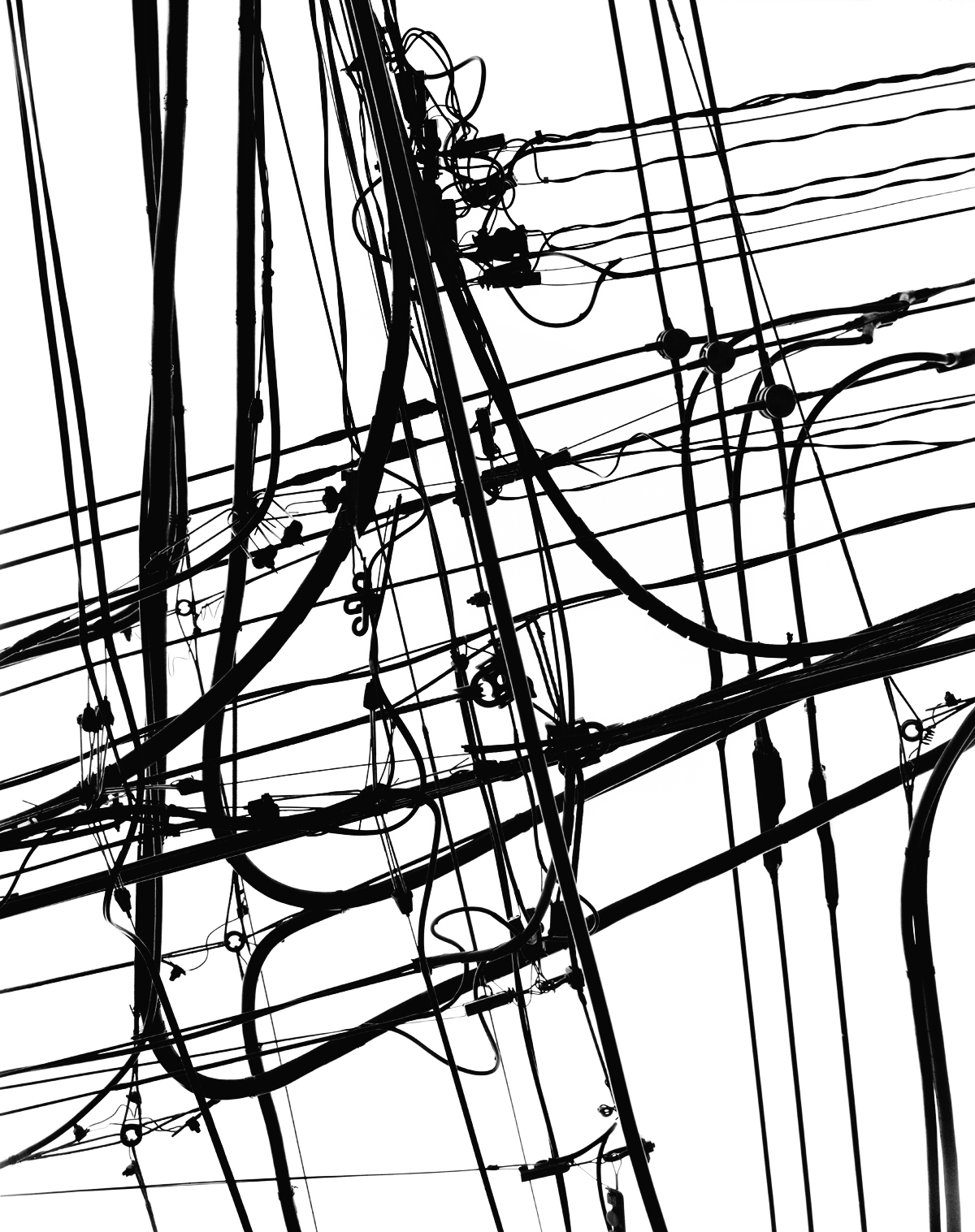Glad to see John Otis and Scott Dalton out in the jungle -- always something interesting they come back with. This time, it's yajé:
Read the story over at GlobalPost.
I'd say that the idea is ripe for South Park, except that they already did it:
Home » news
Tuesday, March 10, 2009
Wires II
Nathan Harger is one of PDN's 30 new photographers to watch, and he also works the same high-contrast black on white of things strung and structural:

Untitled (Powerlines), Elizabeth, NJ 2008
Harger's working in a long tradition, maybe none more influential in this category than the documentary work of the FSA from 1935 to 1945, like this image of West Virgina telephone wires by John Vachon:

I'm certain there's something to the upward angle on these shots (and the celestial background) that gives them their reverent tone. Here's Alfred T. Palmer, 1942:

Enough to suggest even a Weschleresque convergence between John Vachon and Enrique Metinides:

As if laying the grid were ominous of an inevitable future.


Untitled (Powerlines), Elizabeth, NJ 2008
Harger's working in a long tradition, maybe none more influential in this category than the documentary work of the FSA from 1935 to 1945, like this image of West Virgina telephone wires by John Vachon:

I'm certain there's something to the upward angle on these shots (and the celestial background) that gives them their reverent tone. Here's Alfred T. Palmer, 1942:

Enough to suggest even a Weschleresque convergence between John Vachon and Enrique Metinides:

As if laying the grid were ominous of an inevitable future.

Monday, March 9, 2009
Wire: The Power Tokyo Project

(click to enlarge)
Ok, so I said I had a thing for wires, and my site shows it. See Christopher Griffith's Power Tokyo project here (let the promo run for 5 secs, then the slideshow will appear). Meantime, we'll assume that somewhere a grad student is at work on a thesis called "The Grid: Power Lines and the Collectivist Art Naif." Until it's published, I'll keep looking up to admire what electricity has wrought.
Chances are the view's just as good in your own home town, unless you live in New York or Paris, where most of the slinging happens underground. We've lost the novelty and wonder of the extent of the wiring of our lives. That's why the wires on my site are intended as more than an exercise in compositional geometry: they should be an exhortation to look up, to look.

(Robert W. Kelley for Life, May 1962)
The grid, after all, courses with instant death:

This is what Mexican photographer Enrique Metinides figured out. He takes the same formal approach to the geometry of the network, but adds dynamism to the graphic composition. Here the human element does more than just provide scale and perspective. It literally charges the grid:

More on Metinides here and here.
(Hat tip to A Photo Editor, Rob Haggart.)
Subscribe to:
Comments (Atom)



